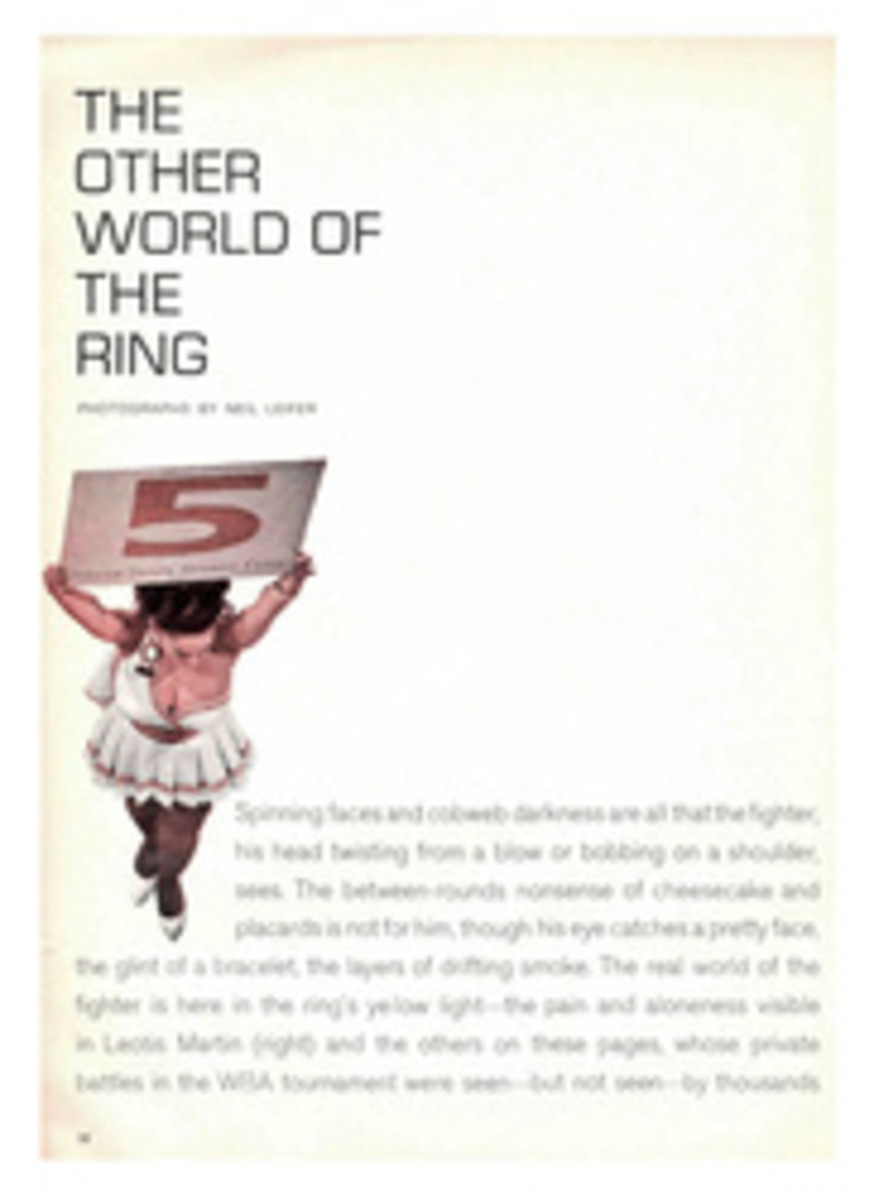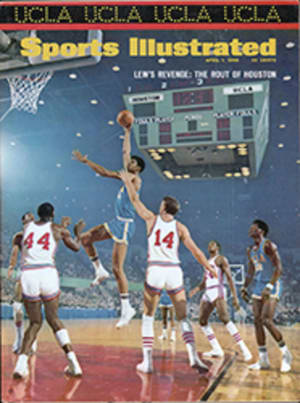
THE BIRDS, THE BEES AND THE PORSCHES
The 12 hours of Sebring is the most popular road race in the U.S. Why this should be so is not exactly clear, and probably never will be. It is neither the longest race nor the fastest, nor does it draw the most spectators, and those who attend have to go through a masochistic hellfire and damnation (the nearest commercial airport is 1½ hours' drive away) even to find the track—a crumbling airstrip six miles outside a small central Florida town, located amid orange groves on top of the East Coast's largest sand box.
And when they do get there, the fun just begins. A select few hundred stay in two pastel-pink luxury hotels, circa 1920s Florida land boom-bust, and pay up to $50 a night for the privilege of hearing a sequined blonde Czechoslovakian massacre songs in nine languages. During the race, the beautiful people sip champagne in the paddock. That takes care of the Eastern white-turtleneck set. The rest, using fraternity-house ingenuity, make do in the infield and drink beer. Surprisingly, everybody smiles.
As Phil Hill, the American driver who won at Sebring three times and now does TV comment, said with a smile, "I know why I'm here, but I'm a bit prejudiced. I'm not sure why people come to see the race. It's nostalgic, I suppose."
Sebring, one of the first U.S. tracks to revive European-style road racing after World War II, held the first United States Grand Prix in 1959 and nearly every famous driver of the last 18 years has raced there at one time or another. More important, it serves as a sort of gathering of the racing clan, international division. Maybe that's all it takes.
Nostalgia or masochism or whatever, 25,000 people were at Sebring last week (about three times as many as saw the 24-hour run at the antiseptic Daytona International Speedway, Sebring's intrastate rival, seven weeks earlier) to watch the little Porsche prototypes do what everybody knew they would—win the second of the season's American sports-car endurance races. The first of Porsche's top two finishers was driven by Jo Siffert of Switzerland and Hans Herrmann of Germany, and it won at an average speed of 102.512 miles per hour, less than a mile an hour slower than last year's record, set by Mario Andretti and Bruce McLaren in the big, but now-outlawed, Mark IV Ford.
For all the 25,000 fans, the happiest fellow at Sebring was the man who started it 18 years ago, Alec Ulmann, the Russian-born MIT graduate whose "honest profession," as he puts it, is representing airplane-parts companies in Europe.
"Before World War I," Ulmann said, "American and European racing, and automobiles, were about equal, but after the war U.S. promoters wanted the most return on the littlest bit of real estate, and they naturally turned to oval racing. That killed U.S. automotive design and engineering for years.
"After World War II, I wanted to try and keep some semblance of European racing over here, and that's why I started the Sebring races. When Bill France built Daytona in 1959 I offered to go in with him—if he would build a separate road course apart from the big oval. He didn't go for it. So what's he got? Sports cars running there look like a can of worms on those banks. But he makes money and I don't."
A friend of Ulmann's, John Paul Stack, a Cornell man and former amature Bentley driver who manages the Harvard Club in New York and who has been at every Sebring race, said, "Sebring has its tradition. It's bigger now than it was in the early '50s, of course. Back then you knew everybody, but there's still a lot of the old intimacy left."
While the more traditional sports-car set held firm in the end, during the race it looked like good old American ingenuity just might take a swipe at all those European types. First to dig in was James Garner, the movie star turned racing nut, who brought out a pair of Chevrolet-powered Lolas, one of which, driven by Californians Scooter Patrick and David Jordan, actually led the race for most of the first 2½ hours before a steering problem forced it to drop back.
During this period two of the four factory Porsches eliminated themselves—one when Lodovico Scarfiotti overrevved his engine to the breaking point. The other threw a valve right through the crankcase. That made things even enough for Roger Penske to think his two Camaros, which were only supposed to be going for a win in their class—the over-two-liter Trans-American division—might have a chance against the other Porsches. But the Porsches did not falter, and Penske settled for third and fourth places overall, 16 and 20 laps behind the Siffert-Herrmann car.
The most serious Porsche challenge came from a pair of GT-40 Fords entered by John Wyer of England, who is not unknown in Dearborn. Although the Fords were competing in the "sports" class like the Lolas, the only thing Wyer was really concerned with was beating the Porsches. "Nobody cares, really, whether you win your class or not," he said in very English English. "The only thing anybody cares about is overall."
The trouble was, the drivers of his No. 1 car, Jackie Ickx of Belgium and Brian Redman of England, had never seen Sebring before last week, and the 5.2-mile course, a succession of long straights and tight, sharp turns, is something no driver, however talented, can learn in a week. During practice, Ickx logged 25 laps, Redman but 12. After just 45 minutes of the actual race, Redman busted his clutch.
At the U-turn at the end of the back straight, Redman went in too deep and spun out. Then in the excitement he engaged the clutch before the car was moving forward.
"It was gone like that," Redman said. "Poof."
The other GT-40, driven by Britain's David Hobbs and Australia's Fred Hawkins, challenged until just after 6 p.m., the eight-hour mark, retiring with suspension damage. Hawkins, however, most definitely had not retired. Half an hour later, flailing a can of beer and employing the language's best-known all-purpose verb, adjective and noun, Hawkins precipitated the most interesting discussion of the race.
Seems that three hours before, he had bounced off a little Porsche 911 (not one of the prototypes) that he found broadside in the Esses, a very quick left-right-left chicane about one-third of the way through the course. "The Porsche didn't cause the accident," Hawkins bellowed. "Those bloody birds did."
That was a reference to a girl team in an American Motors Javelin. "They drove like they were in a bloody funeral procession," said Hawkins. "One girl was ahead of the Porsche and motioned him past, then changed her mind—just like a bloody woman—and kept going. The Porsche hit her and spun and blocked the bloody track. I got off the road into the grass but I still couldn't miss the Porsche. Those bloody birds shouldn't be in the race. A woman's place is in the bedroom or the kitchen, and if she can't cook, send her back to the bedroom."
Half an hour after that, the girl involved, a striking blonde from Holland named Liane Engeman, told her version—dust, dirt and burned rubber doing very little to detract from her attractive features. "The Porsche was going too fast," she murmured. "It simply couldn't make the turn. I don't know what Hawkins was doing except making excuses for a mistake. This make me very mad."
"What color eyes do you have?" somebody asked.
"Blue," she said.
After that was over, everybody settled down again for the finish. In the last two hours the only serious Porsche problem occurred when the second-place car pitted for 22 minutes to replace a burned-out wheel bearing, but that was all.
At 10 p.m. fireworks lighted the clear Florida night, and Alec Ulmann's wife Mary walked into an impromptu victory lane and kissed Huschke von Hanstein, the Porsche team manager, who was dressed immaculately in British tweeds.
Then the trophy was filled with champagne, Herrmann and Siffert sipped from it, and everybody started home, vowing never to come back to the Florida midlands—until next year.
PHOTO
Javelin Driver Liane Engeman of Holland pretties up before her row with a boiling Aussie.
PHOTO
The winning Porsche pits for fuel, and Driver Hans Herrmann (left) relieves Jo Siffert (on car).

